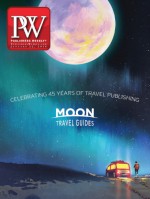In Jacobs’s The Last Equation of Isaac Severy (Touchstone, Mar.), the title character, a brilliant mathematician, leaves behind cryptic clues to his mysterious death for his granddaughter to solve.
How did you come up with this idea?
The idea of a murder mystery set against a mathematical backdrop had been accumulating in my mind for some time. I had moved to Los Angeles for the film culture, but found myself simultaneously fascinated by the worlds of Caltech and the Jet Propulsion Laboratory. Here was this entire buzzing universe of creativity and mental rigor completely separate from Hollywood, yet just over the hill in Pasadena. I loved the idea of a story set in L.A. in which the entertainment industry didn’t even warrant a mention.
What does using mathematics as a central plot element do?
From a plot perspective, the equation of the title is purely a MacGuffin, and could presumably be any treasure that would keep the characters searching, fighting, and tearing their hair out. It’s really through the characters and their world, not the plot mechanics, that the mathematics angle sings for me. How does a given character’s numerical talents—or lack thereof—shape how they move through life? How does this unifying religion of mathematics affect each member of this family? It just so happens that the math element was roomy enough to allow for a whodunit and some gruesome deaths.
Do mathematicians view the world differently?
I do think so. But then don’t we all use our specific areas of expertise to filter our experiences? It just happens that mathematicians—much like artists—experience this filtering in a particularly rarefied and abstract way. In his book Letters to a Young Mathematician, Ian Stewart writes that to be a mathematician is to encounter mathematical beauty not only in the interior arena of numbers and symbols but also in the everyday world, like the precise rhythms of a dog’s gait or the geometry of birds assembled on a telephone wire. He goes on to say that a mathematician’s grasp of the patterns that constitute beauty doesn’t diminish its emotional impact, but rather deepens it.
Did your own family dynamics influence the interactions of the Severy family?
I don’t come from a mathematical or scientific family, but I do come from a family that at one point or other has been labeled as weird. My parents were aggressively uninterested in fitting in. Much of my childhood was spent roughing it in the woods of Flagstaff and generally feeling separate from my classmates—this at a time before weird was cool. The Severys are not my family, but the flavors of eccentricity and otherness are certainly there.



 Volume 265
Issue 4
01/22/2018
Volume 265
Issue 4
01/22/2018





